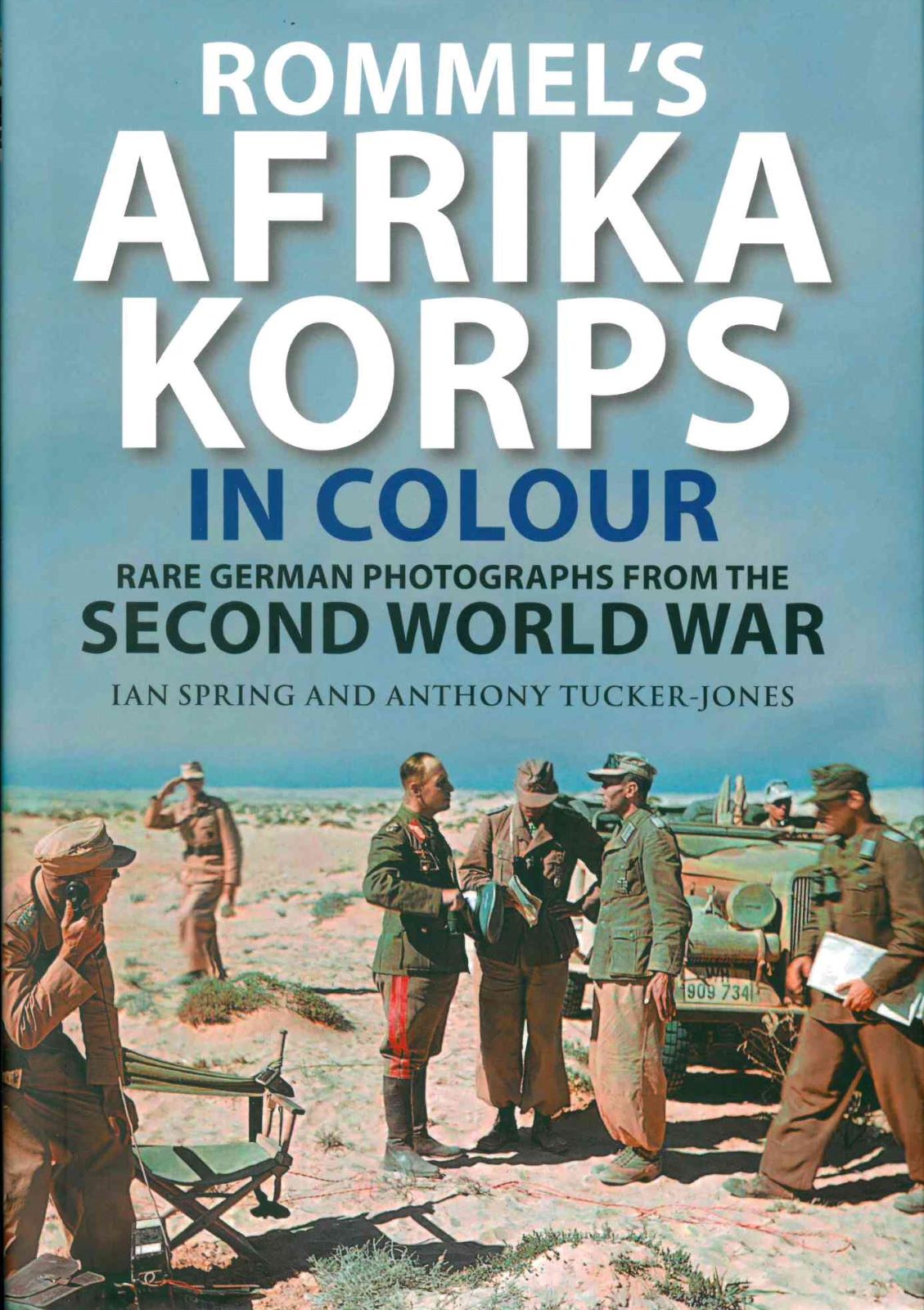Rommel's Afrika Korps in Colour
Anthony Tucker Jones really doesn’t need an introduction to military history readers with his impressive book pedigree, over 500 articles and his contributions to modelers through Pen & Sword and Casemate. His latest book builds on his impressive reputation, and his ability to tie in well-known history of a pivotal and influential German Field Marshall, along with amazing color photographs from Ian Spring’s digital archive, makes this a highly recommended book.
Rommel's Afrika Korps in Colour - Rare German Photographs from the Second World War, is composed of an introduction, five parts with 14 chapters, and an order of battle:
- Introduction: The ‘Desert Fox’
- The Deutsches Afrika Korps
- Operation Sunflower
- The Desert War
- The Kriegsberichter and Deputy Reichspresschef
- This Remarkable Collection
- Life and Death in North Africa
- North Africa Chronology: Key Events
- Part One: The Deutsches Afrika Korps Arrives
- Preparations
- Build-up in Tripoli
- Meet the Locals
- Part Two: Hardware of War
- Panzer Group Afrika
- Beware the ‘88’
- Don’t Spare the Suspension
- Part Three: Out into the Desert
- Baking at the Front
- Rommel’s Achilles Heel
- Rest and Recreation
- Part Four: War in the Skies
- Seaplane to Tripoli
- Tri-Motor Workhorse
- Desert Aviation
- Part Five: The Rise and Fall of the Deutsches Afrika Korps
- Rommel Up Close
- Defeat in Tunisia
- Deutsches Afrika Korps Order of Battle
- Sources and Further Reading
After a summary of the chapter to come, there follows a multitude of often unpublished photographs (in color) showing German armor, armored units, soldiers, and how they fought and survived the elements in combat in North Africa under the leadership of Erwin Rommel.
There is a lot written about the North African Front in World War II. Anthony Tucker Jones found new information (at least to me, who has studied Erwin Rommel dating back to his World War I days on the Italian Front) about the Desert Fox. His perspective comes from the interactions with some of his closest subordinates and, most notably, his relationship with the military’s Propaganda Kompanien, also known as PK-reporters, or Kriegsberichter.
Rommel was lucky because he had a close publicity ally who fought his (in) corner with both Goebbels and Hitler. Attached to his staff was Lieutenant Alfred-Ingemar Berndt, a Deputy Reichspresschef (Deputy Reich Press Chief) from the Propaganda Ministry who served Rommel as an aide-de-camp.” Furthermore, Lieutenant Heinz Schmidt noted, ‘This burly man with his great bowed head often reminded me of a bear. Although he wore the uniform of an ordinary lieutenant, he liked to give the impression that he was still an influential figure in the Ministry of Propaganda.’
Continuing,
Being in his mid-thirties, Berndt was rather old to be just a lieutenant, but he had no scruples about using his connections to benefit Rommel and himself. Rommel described Berndt as ‘a man with a very persuasive tongue.’ Kesselring (Generalfieldmarschall Albert Keesling was Rommel’s commander in Africa as the Wehrmacht Commander-in-Chief South) rather scathingly called him Rommel’s mouthpiece.’ He acted as Rommel’s personal emissary with Goebbels and Hitler as well as his eyes and ears in meetings with senior commanders.
As the Kriegsberichter answered to Berndt, it is not hard to see that Rommel was seen in a positive light, and often, with both the German people and leadership. After Rommel’s defeat in North Africa in May 1943, it was Goebbels support that ensured Rommel took over the defense of Italy after Italy switched to the Allied side. Soon afterward he was placed in charge of Hitler’s Atlantic Wall defenses.
The focus of this book is the amazing color images courtesy of the Pixpast Archive created by co-author Ian Spring. The Pixpast Archive is a collection of over 30,000 German Afgacolor slides. The authors continue,
The vibrancy of the colours makes the images so much more intimate and gives them a sense of immediacy. German soldiers in North Africa were photographed in a huge variety of uniforms consisting of shirts, jackets, riding breeches or jodhpurs, trousers and shorts of various length. Headgear comprised the tropical sun helmet or – at least initially (it was soon largely abandoned as impractical) – officer’s cap, Bergmütze or peaked field cap, the Feldmütze or side cap and steel helmet. These colour photographs show that there was little standardization in tropical uniform colors.
Of interest, “On all Afgacolor packaging, it said Afgacolor was not intended for hot climates. This led to a lot of Afgacolor not being used in Africa and what was used was often badly damaged from the excessive cold and heat, making original colour photos from the African campaign especially rare.”
While this book is not a thorough history of North Africa in World War II, it is a great primer with its history, background, strategy, and field conditions. The photos are the true gem and will be invaluable to modelers who want to build a vehicle, aircraft, naval vessel, a vignette, and/or a diorama. The photos show the harsh conditions, how German soldiers adapted to them and both combat and moments of relaxation. I also appreciated the new insight into Erwin Rommel and his popularity. Having read this book, I now understand more about his mythical status. A great point in case is the cover image. It shows Rommel conferring with his staff, with a messenger arriving, a radio operator keyed in and a passing gefreiter saluting. While this looks “natural”, this great book puts doubt in my mind that it was staged. My only suggestion to improve this book would be to incorporate maps to follow the text. As an unabashed bibliophile, I appreciated the incorporated red ribbon bookmark that is affixed to the hard-backed spine.
Profuse thanks to Casemate and IPMS/USA for providing the review sample.








Comments
Add new comment
This site is protected by reCAPTCHA and the Google Privacy Policy and Terms of Service apply.
Similar Reviews